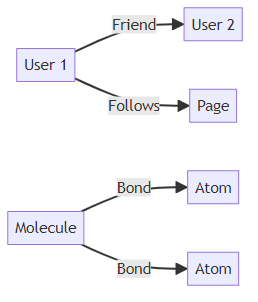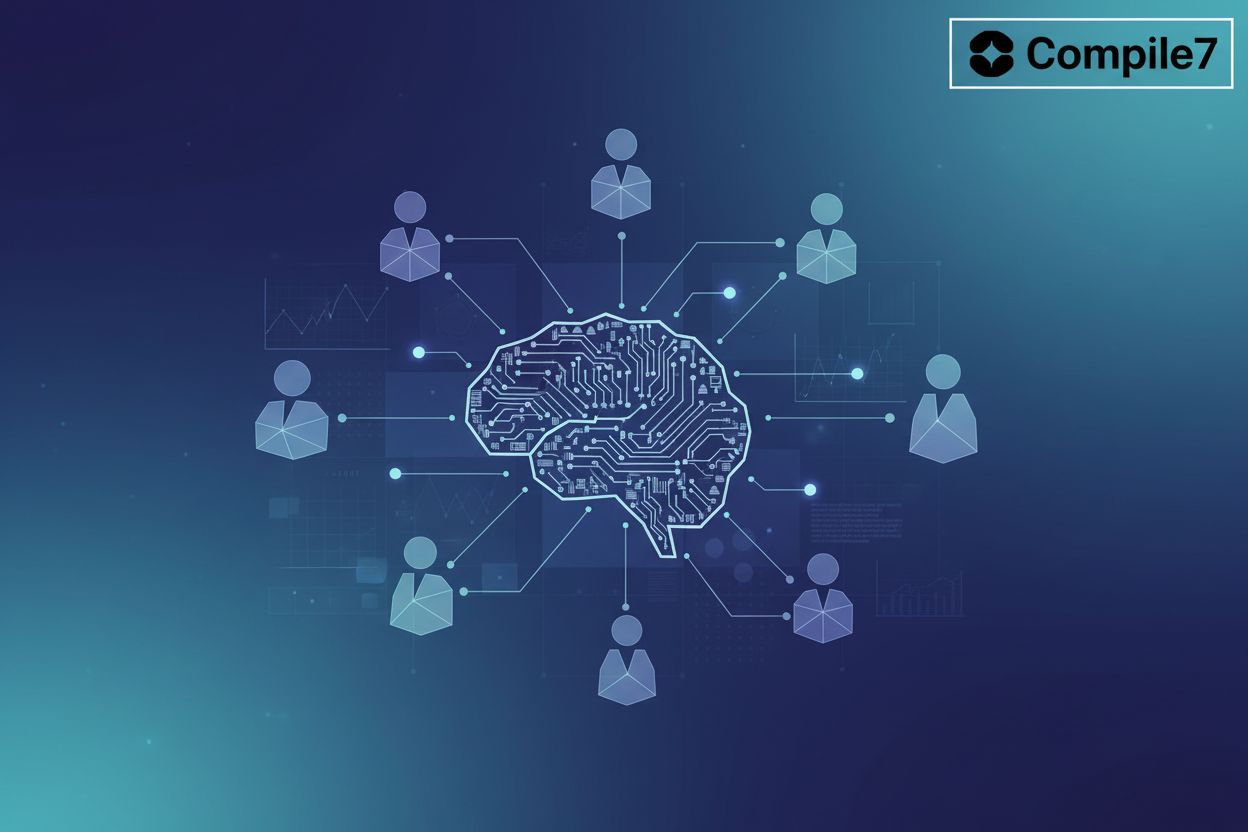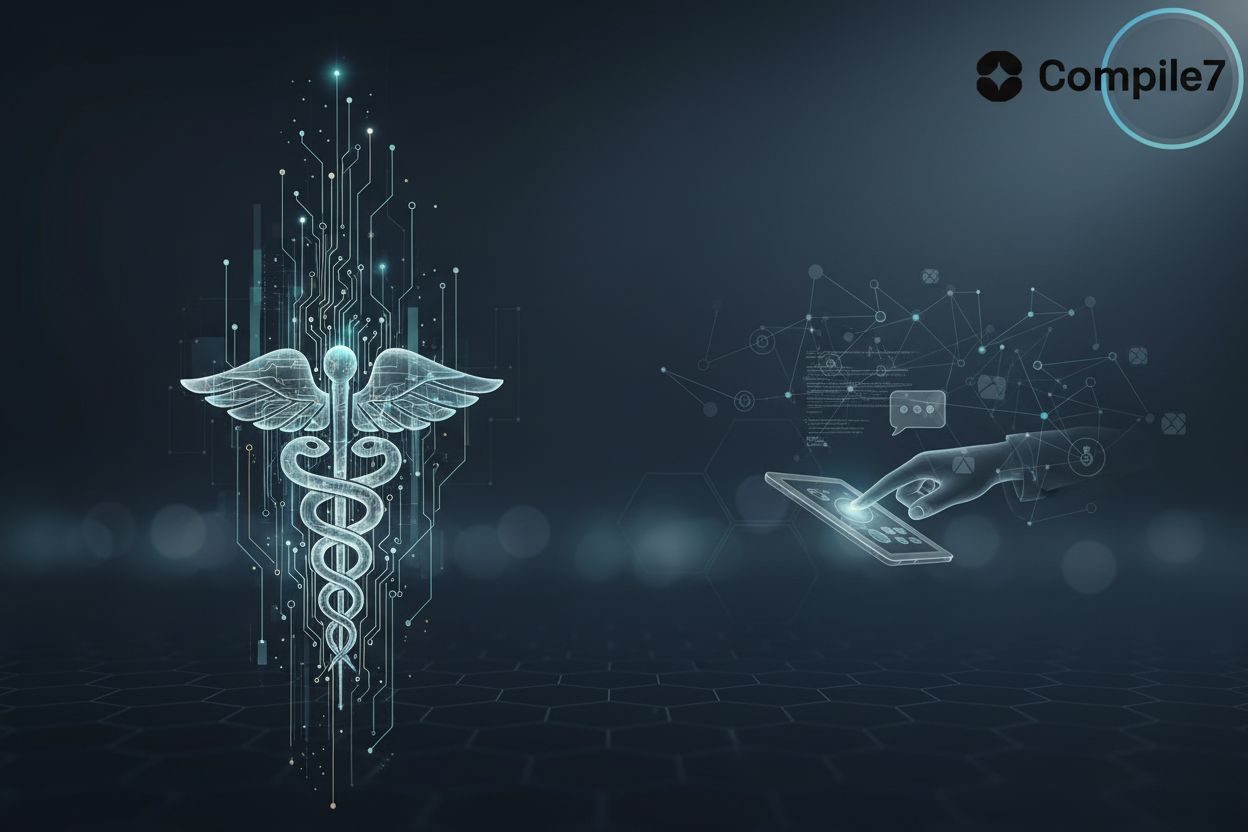Revolutionizing AI Agents: Exploring Transformer and Graph Neural Network Architectures
Understanding the AI Agent Landscape
Did you know ai agents are poised to revolutionize industries, automating complex tasks and driving unprecedented efficiency? Let's explore the current ai agent landscape and understand what makes these systems so transformative.
ai agents are autonomous software systems designed to achieve specific goals on behalf of users. They're not just simple programs; they exhibit:
- Reasoning: Employing logic and data analysis to make informed decisions.
- Planning: Developing strategies to achieve goals, anticipating future states, and potential obstacles.
- Memory: Storing and recalling information to inform future actions.
- Adaptability: Learning from experience and modifying behavior based on feedback.
For example, an ai agent might be tasked with managing a company's social media presence. It could monitor trending topics, draft posts, schedule them for optimal engagement, and even respond to comments based on pre-defined guidelines and its learned understanding of the brand's voice.
ai agents leverage multimodal input (text, voice, video) for a comprehensive understanding of their environment. These advanced capabilities set them apart from basic ai assistants and bots.
Advanced ai agents possess a range of capabilities that enable them to operate effectively in complex environments. These include:
- Acting: Executing tasks based on decisions, plans, and external inputs.
- Observing: Gathering environmental information through methods like computer vision and NLP.
- Collaborating: Working effectively with humans and other ai agents.
- Self-Refining: Continuously improving performance through learning and adaptation.
It's crucial to differentiate ai agents from other ai-powered tools. Here’s a breakdown:
- ai Agents: Autonomous, proactive, handle complex tasks, and possess learning capabilities.
- ai Assistants: Reactive, user-prompted, perform simpler tasks, and have some learning capabilities.
- Bots: Reactive, rule-based, offer basic interactions, and have limited learning.
The diagram below illustrates the core components and interactions within a typical ai agent architecture, showing how perception, reasoning, planning, and action modules work together to achieve goals.

Understanding these distinctions enables businesses to strategically implement the right ai solution Chatbase - ai chatbot platform.
These sophisticated capabilities, like reasoning, planning, and memory, demand powerful underlying architectures. That's where transformer and graph neural network architectures come into play, providing the computational backbone for these intelligent systems.
The Power of Transformer Networks in AI Agents
Did you know that transformer networks, initially designed for language translation, are now revolutionizing ai agents? These powerful architectures enable agents to understand context and make decisions more effectively.
Transformers have become a cornerstone in ai, particularly for tasks involving sequential data. At their core, transformers use an encoder-decoder structure, where the encoder processes the input sequence and the decoder generates the output.
- Self-attention is a key mechanism, allowing the model to weigh the importance of different parts of the input data when processing it. By capturing these long-range dependencies, transformers can grasp context more effectively than previous architectures.
- Unlike recurrent neural networks (RNNs), transformers process the entire input sequence in parallel, significantly speeding up training and inference. This parallel processing capability is crucial for handling large datasets.
- Positional encoding is used to maintain the order of the sequence since the self-attention mechanism is order-agnostic. This ensures that the model understands the sequence's structure.
- Multi-Head Attention Transformers use Multi-Head Attention to allow the model to focus on different parts of the input sequence. This is beneficial because having multiple "heads" allows the model to simultaneously attend to different aspects of the input, capturing a richer set of relationships and improving its ability to understand complex patterns and nuances. It's like having multiple people read a document, each focusing on a different angle, and then combining their insights for a more comprehensive understanding.

Transformers are driving innovation across various applications for ai agents. From understanding complex queries to generating creative content, their impact is significant.
- Natural Language Understanding (NLU) is greatly enhanced by transformers, enabling agents to comprehend and respond to complex user queries with greater accuracy. For example, ai agents can now understand nuanced requests in customer service scenarios, providing more relevant and helpful responses.
- Content Generation is another area where transformers excel. ai agents can create human-quality text, code, and other content formats, making them valuable tools in marketing and content creation.
- Machine Translation capabilities allow ai agents to facilitate seamless communication between users in different languages. This is especially useful in global customer support and international business.
Transformers are used in ai agents for customer service, content creation, and data analysis, enhancing their ability to understand and respond to complex tasks.
While transformer-based agents offer many advantages, it's important to acknowledge their limitations. Understanding both sides helps in making informed decisions about their implementation.
- Superior performance on NLP tasks is a major advantage, enabling better language understanding and generation. Their ability to handle long sequences and parallel processing capabilities also contribute to faster and more efficient performance.
- However, transformers come with a high computational cost, requiring significant resources for training and deployment. This can be a barrier for smaller organizations.
- The potential for bias in training data is another concern, as transformers can amplify existing biases in the data they are trained on. Explainability also remains a challenge, as understanding the decision-making process of transformers can be difficult.
Despite these limitations, the power and versatility of transformer networks make them a key component in the evolution of ai agents.
Now, let's explore the role of graph neural networks in ai agents and how they complement transformer architectures. While transformers are great with sequences, many real-world problems involve interconnected data, which is where GNNs shine.
Graph Neural Networks (GNNs) for Relational Intelligence
Did you know that graph neural networks (GNNs) are quietly becoming the dark horse behind many exciting ai advancements? Companies like Uber and Google are already shifting to GNN-based approaches in some of their core products, motivated by the substantial performance improvements exhibited by these methods.
GNNs leverage the power of graph theory to represent complex relationships within data. Instead of treating data as isolated points, GNNs focus on the connections between them.
- Nodes represent entities, such as users in a social network or atoms in a molecule.
- Edges define the interactions or relationships between these entities, such as friendships or chemical bonds.
- GNNs use this graph structure to learn node embeddings, which are dense vector representations capturing the node's characteristics and its relationships within the graph.
- By encoding these relational structures, GNNs can perform both node-level predictions (e.g., classifying users) and graph-level predictions (e.g., predicting the properties of a molecule).
The diagram here shows how information flows between connected nodes in a graph, illustrating the core message-passing mechanism of GNNs.

GNNs are proving to be a crucial tool for solving real-world problems across totally different and seemingly unrelated areas. Let’s look at some examples and the results of applying GNNs to large-scale models in production.
- Recommendation Systems: GNNs can capture user-item relationships and social networks, enhancing recommendation accuracy. For example, Uber Eats uses GNNs to recommend dishes and restaurants, reporting a performance boost of over 20% compared to existing models AssemblyAI - ai platform that converts speech to text with high accuracy.
- Fraud Detection: By analyzing transaction networks, GNNs can identify fraudulent activities by detecting anomalous patterns. This is particularly useful in the finance and insurance industries, where complex networks of transactions can be difficult to monitor manually.
- Drug Discovery: GNNs can model molecular structures as graphs, predicting drug efficacy and toxicity. This accelerates the drug discovery process by identifying promising candidates and reducing the need for extensive laboratory testing.
- Traffic Prediction: Google Maps uses GNNs to improve the accuracy of estimated time of arrival (ETA), leading to drastic reductions in negative user outcomes AssemblyAI - AI platform that converts speech to text with high accuracy.
While GNNs offer powerful capabilities, scaling them to large graphs presents challenges. Fortunately, researchers have developed techniques to improve their scalability.
- GraphSAGE is explicitly designed to efficiently generate useful node embeddings on unseen data and represents a major breakthrough in recommendation systems. It achieves this by learning to aggregate information from a node's neighbors, allowing it to generalize to new nodes without needing to re-train on the entire graph. This makes it much more efficient for large, dynamic datasets.
- Sampling methods reduce the computational burden by processing only a subset of the graph during training.
- Distributed training distributes the GNN workload across multiple machines, enabling it to handle massive datasets.
As with any ai architecture, there are trade-offs between accuracy and efficiency in GNN design.
Now that we've explored GNNs, let's delve into how their ability to model relationships can be combined with the sequential processing power of transformers to create even more capable ai agents.
Combining Transformers and GNNs: Hybrid Architectures
Imagine ai agents that not only understand your requests but also grasp the intricate relationships within your data. Combining the strengths of transformers and graph neural networks (GNNs) does just that, paving the way for more intelligent and capable ai systems.
Hybrid architectures leverage the unique advantages of both transformers and GNNs. This powerful combination enhances the capabilities of ai agents, leading to more robust and adaptable systems.
- Transformers excel at processing sequential data and capturing long-range dependencies. Their self-attention mechanisms allow them to understand context in text, code, and other sequential information.
- GNNs excel at modeling relational data and capturing structural information. By representing data as graphs, GNNs can identify patterns and relationships that would be missed by traditional models.
- Combining these architectures can lead to ai agents with enhanced reasoning and decision-making capabilities. For instance, an AI agent could use a transformer to understand a customer's request and a GNN to analyze the customer's network of relationships to provide a personalized recommendation. The transformer would interpret the customer's spoken or written query, while the GNN would map out their connections within a social or purchase history graph, allowing the agent to suggest products or services that align with their social circle or past behavior.
Hybrid models are finding applications in diverse fields, enhancing ai agents' ability to understand and interact with complex data. These aren't just theoretical concepts; they're being applied to real-world problems.
- Knowledge Graph Reasoning: Using Transformers to process textual information and GNNs to reason over knowledge graphs. For example, an AI agent could use a transformer to extract information from a research paper and a GNN to connect that information to a broader network of scientific knowledge, identifying related studies or potential research avenues.
The diagram here illustrates how a transformer might process text from a document, and then how a GNN could use that extracted information to navigate and reason over a structured knowledge graph.

- Social Network Analysis: Combining Transformers for sentiment analysis with GNNs for network structure analysis. Imagine an AI agent that uses a transformer to analyze the sentiment of social media posts and a GNN to identify influential users within a social network, allowing for targeted marketing campaigns or trend analysis.
- Multi-Modal Learning: Integrating Transformers for processing image and text data with GNNs for modeling object relationships. For example, an AI agent could use transformers to analyze images and text descriptions of products, and then use a GNN to model the relationships between those products in a recommendation system, suggesting complementary items based on their visual and textual attributes and how they're typically bought together.
While promising, hybrid models also present challenges that researchers are actively working to address. Overcoming these challenges will unlock even greater potential for ai agents.
- Complexity in training and optimizing hybrid models. Combining two complex architectures requires careful consideration of training strategies and hyperparameter tuning.
- Need for novel architectures and training techniques to fully exploit the synergy between Transformers and GNNs. Current hybrid models often treat transformers and GNNs as separate components, but future research could lead to more tightly integrated architectures.
- Potential for developing more robust and adaptable AI agents through hybrid approaches. As hybrid models become more sophisticated, they could enable ai agents to handle even more complex and dynamic environments.
These hybrid architectures are the engine behind many of the real-world applications we're seeing today, enabling ai agents to tackle problems that were once intractable.
Real-World Applications and Impact
ai agents are rapidly transforming industries, but how are they making a real-world impact? Let's explore the practical applications of these advanced systems across various sectors.
ai agents are revolutionizing e-commerce and retail by enhancing various operational aspects.
- Personalized product recommendations and dynamic pricing are key benefits, as ai agents analyze customer behavior and market trends to tailor offers and optimize pricing strategies.
- Automated customer support and order management streamline interactions, providing instant assistance and efficient handling of order-related inquiries.
- Supply chain optimization and inventory management ensure efficient stock levels and timely deliveries, reducing costs and improving customer satisfaction.
Amazon's recommendation system, powered by ai agents, generates 35% of the company's revenue, showcasing the immense potential of ai in driving sales. This system likely uses a combination of transformer-like models for understanding product descriptions and user reviews, and potentially GNNs to model relationships between products and user purchase histories.
The healthcare and life sciences sectors are also experiencing significant advancements through ai agents.
- Drug discovery and personalized medicine are accelerated by ai agents that analyze vast datasets to identify potential drug candidates and tailor treatments to individual patient needs.
- Medical diagnosis and image analysis enable faster and more accurate detection of diseases, improving patient outcomes.
- Robotic surgery and patient monitoring enhance precision and efficiency in surgical procedures and provide continuous monitoring of patient health.
Google's ai agent achieved 85.4% sensitivity in diagnosing skin cancer, surpassing the accuracy of dermatologists and demonstrating the potential of ai in improving diagnostic accuracy. This likely involves transformers for analyzing medical text and potentially GNNs for understanding relationships within medical imaging data.
ai agents are playing a crucial role in transforming the finance and banking industries.
- Fraud detection and risk management are enhanced by ai agents that analyze transaction patterns to identify and prevent fraudulent activities.
- Algorithmic trading and portfolio optimization enable more efficient and profitable trading strategies, optimizing investment portfolios for maximum returns.
- Customer service and financial advice are personalized through ai agents that provide tailored recommendations and support to customers.
As ai agents continue to evolve, they will undoubtedly play an increasingly important role in driving innovation and efficiency across various industries. Now, let's consider how to actually build and deploy these powerful systems.
Custom AI Agent Development with Compile7
Ready to revolutionize your business with ai? Compile7 specializes in custom ai agent development tailored to your specific needs. Let's explore how they can transform your operations.
Compile7 develops custom ai agents to automate tasks and boost productivity. The focus is on tailoring ai to meet your unique business challenges.
- Customer Service Agents: Providing personalized support.
- Data Analysis Agents: Uncovering actionable insights.
- Content Creation Agents: Generating engaging content.
- Research Assistants: Streamlining information gathering.
- Process Automation Agents: Optimizing workflows.
- Industry-Specific Agents: For example, in healthcare, agents could assist with patient scheduling, managing electronic health records, or even summarizing medical literature for practitioners.
Compile7's process begins with understanding your requirements and setting clear goals. Next, the appropriate architecture (Transformers, GNNs, or hybrid models) is selected based on the problem's nature.
ai agents are developed and trained using cutting-edge techniques. Finally, Compile7 provides ongoing support to ensure optimal ai agent performance.
Understanding the current capabilities and development processes naturally leads us to think about what's next.
The Future of AI Agent Architectures
The future of ai agents is rapidly evolving, promising exciting advancements and raising important considerations. Let's explore the emerging trends, ethical responsibilities, and strategies for navigating this new era.
Explainable AI (XAI) is gaining traction, focusing on ai agents that offer transparent reasoning. This is crucial for building trust and ensuring accountability in decision-making processes. For instance, an ai agent making a financial recommendation should be able to explain why it made that suggestion, not just present the recommendation itself.
Federated Learning enables ai agents to train on decentralized data while protecting privacy. This approach is particularly valuable in healthcare and finance, where data sensitivity is paramount. It means agents can learn from vast amounts of data without that data ever leaving its original source.
Reinforcement Learning empowers ai agents to learn through trial and error in complex environments. This is beneficial for applications like robotics and autonomous systems, where agents need to adapt to dynamic and unpredictable situations.
Multi-Agent Systems are designing ai agents to collaborate and compete effectively in dynamic settings. These systems hold promise for optimizing logistics, resource management, and complex problem-solving, where multiple agents working in concert can achieve more than any single agent could alone.
Addressing bias in ai agent training data and algorithms is essential for fairness. Ensuring diverse and representative datasets helps prevent discriminatory outcomes. It's important to actively identify and mitigate biases that could lead to unfair treatment or skewed results.
Ensuring fairness and transparency in ai agent decision-making promotes accountability and builds trust. Explainable ai techniques can shed light on how agents arrive at their conclusions, making their actions more understandable.
Protecting user privacy and data security is paramount, especially when dealing with sensitive information. Implementing robust security measures and adhering to data protection regulations are critical to maintaining user confidence.
Promoting responsible ai development practices and ethical guidelines fosters innovation while minimizing potential risks. Organizations should establish clear ethical frameworks and governance structures to guide the creation and deployment of ai agents.
Investing in ai talent and infrastructure is crucial for organizations looking to leverage ai agents. This includes hiring skilled data scientists, ai engineers, and ethicists who can navigate the complexities of ai development.
Developing a clear ai strategy aligned with business objectives ensures that ai initiatives are focused and impactful. This strategy should outline specific goals, use cases, and metrics for success, preventing aimless development.
Embracing a culture of experimentation and continuous learning fosters innovation and adaptability. Organizations should encourage employees to explore new ai technologies and approaches, staying ahead of the curve.
Collaborating with ai experts and partners accelerates innovation and reduces the risk of failure. Seeking guidance from experienced ai consultants can help organizations navigate the complexities of ai implementation and avoid common pitfalls.
As ai agents become increasingly integrated into our lives, it's crucial to address the ethical implications and promote responsible development practices. Understanding these future trends and ethical considerations is key to building the next generation of intelligent systems.





